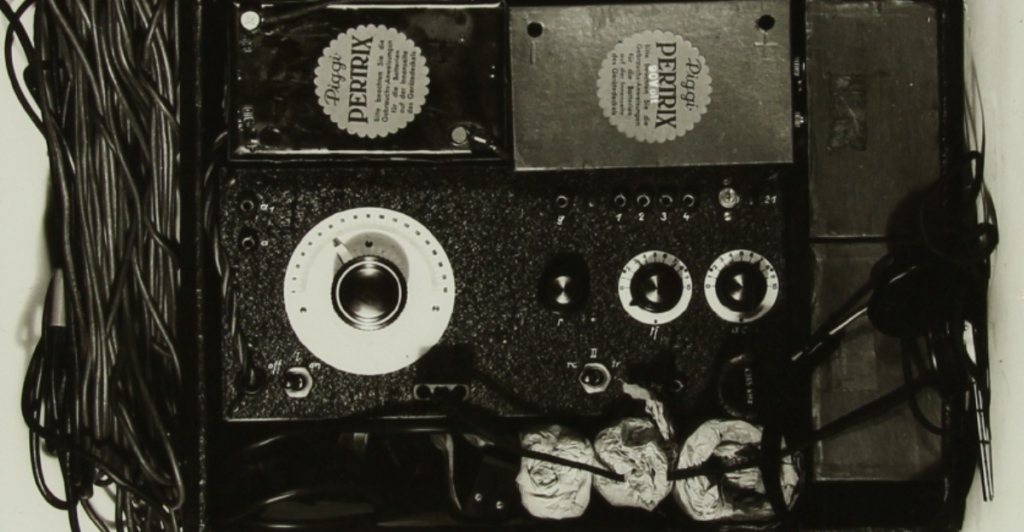N.B. 2021 01 31 – I’ve posted a follow-up blog on Spy Radios here.
A few years ago, I reached out to the Military Wireless Museum’s Ben Nock for assistance with deciphering the schematics of Josef Jakobs’ wireless radio transmitter/receiver. After examining the electrical circuit diagram, Ben concluded that the set was an SE 88/5.
A few months ago, I received an email from Thomas Hoeppe, a Bavarian amateur radio enthusiast. His passion is rebuilding wartime espionage radios and he was particularly fascinated by the radios used the Operation LENA spies on their missions to England. Thomas has quite a network of contacts in the amateur radio field, including the Cryptomuseum site (run by Dutchmen Paul Reuvers and Marc Simons), Arthur O. Bauer (a Dutchman who runs a website platform upon which he presents his decades-long research into German wartime technology) and… Rudi Staritz, a nonagenarian (soon to be a centenarian) who actually worked for the Abwehr in Stahnsdorf and later on the Eastern Front.
Thanks to the research presented on Arthur O. Bauer’s site, Thomas was able to access some RSS reports from the National Archives which included photographs of the inner workings of the S88 transmitter (the same as the transmitter in the SE 88/5 set). According to Thomas, the SE 88/5 was actually very rare set and quite heavy (larger cores in the receiver requiring more space and therefore a larger housing with attendant extra metal). He thought it unlikely and quite dangerous for Josef to have had that radio strapped to his chest during his parachute drop. Thomas asked to see the schematics of Josef’s radio and I sent them along to him.
Thomas examined the schematics in detailed and concluded that Josef’s set was indeed not an SE 88/5 but rather the SE 92/3. The differences are slight but significant. Thomas also concluded that almost all of the LENA spies, with one notable exception, were either equipped with the SE 92/3 or with a simple S88 transmitter (no receiver).
Radio Intricacies
First, let’s take a look at some basics. What the heck is an SE 88/5 anyhow?
Within Abwehr terminology, “S” stands for the transmitter (“Sender” in German) and E stands for the receiver (“Empfänger” in German). So an SE 88/5 was a Transmitter/Receiver (SE). The 88 was simply a sequential serial number and the earliest series began with sets numbered in the 70s. The 5 refers to 5 watts of output power although it can also refer to the DC (battery) input power on the anode, depending on the set.
The Germans had initially designed a standard receiver (the E75) which used three CF7 (receiving) valves (valves are the same as tubes, just depends if you’re in the UK or the USA) that, unfortunately, had high power consumption. This meant that the set needed to run off the mains power supply (plug it into a wall), making it susceptible to discovery by the authorities (rotating power blackouts in a city and when the spy transmission cut out, they could narrow down the area). On top of that, the Germans had targets in the East where mains power supplies were limited. The Germans realized that they needed a battery-powered set and developed three early versions:
- SE 88/5 – often used as a stand-alone S88 transmitter without a receiver
- SE 92/3 – very similar to the SE 88/5 differing only in the core around which the coil was wound
- SE 98/3 – similar to the above but did not use KF4 (receiving) valves like the SE 88/5 & SE 92/3
All three sets used the KL2 transmitting valve with 2V for the heaters. The Germans relied on dry cell batteries (usually Zinc/Coal versions) which provided 1.5V per cell. With two, or sometimes three, individual battery cells in a row (a total of 3V or 4.5V), there was often too much juice for the 2V KL2 valves, requiring drop-resistors, releasing much of the stored power as heat.
The E88 receiver was packaged within the same housing as the E75 but the CF7 (receiving) valves were replaced with three KF4 (receiving) valves. The housing remained the same, but the internal schematic changed a bit. The transmitter and receiver were contained within separate housings.
The SE 92/3 was smaller and lighter than the SE 88/5 and used a KL2 (transmitting) valve and KF4 (receiving) valves. The transmitter and receiver were contained within one single housing. The E92 receiver was smaller than the E88 as the coils were not wound around huge 35mm ceramic forms (E75/88/89/90) but around much smaller iron dust cores (see photo below). The transceiver coils were likely large 25 mm ceramic cores, not iron dust core. The SE 92/3 units, and their batteries, were all housed within small suitcases.
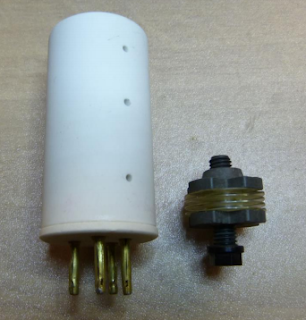
Josef’s Wireless Transmitter / Receiver Set
According to Thomas, the schematics of Josef’s set show that he had KF4 (receiving) valves so he definitely had a receiver, not just a transmitter. He was therefore given either the SE 88/5 or the SE 92/3 (the SE 98/3 did not use KF4 valves). His fibre suitcase (40.7 cm x 29 cm x 14 cm) was large enough to house both of those radios. The moulded morse transmitter key was likely the TKP (Taste klein Pressstoff), a small “mouse key” made of Bakelite.
In addition, according to the report on Josef’s set by radio expert L.W. Humphreys, the coils in the receiver were wound around two “common dust cores” and this would be indicative of the SE 92/3. The SE 88/5 had the same schematic but used large 35 mm ceramic forms for the receiver coils. The E92 used tiny Siemens SiRuFer (Siemens Rundfunk Ferrit) three-chamber iron powder (dust) forms.
In addition to these distinctions, Thomas notes that the S88 tuning light was located in the upper left hand corner of the housing. The SE92/3 had the tuning bulb in the upper right hand corner of the housing. The S88 also had the crystal connectors on the left side of the housing, while the key and switch were on the bottom edge of the housing. On the SE92/3, the crystal and key connectors are located on the bottom edge of the housing.
Right then. The question then became, did the other spies have SE 92/3 sets as well? There are several MI5 reports which note that Josef’s set was the same as that of Drücke/Eriksen and that their set was the same as that of Walti.
I’m not going to go into the intricate details but… suffice to say that after reviewing multiple Kew documents, and the electrical schematics of various spy radios, Thomas and his colleagues have concluded that only TATE had the extremely rare, and heavy, SE 88/5 setup. As for the other LENA spies, they were equipped with:
- S88 – Waldberg, Meier, Kieboom, Pons – only a transmitter, no receiver
- SE 92/3 – Caroli/SUMMER, Walti, Drücke & Ericksen, Ter Braak, Jakobs
- Richter had a free oscillating adapter transmitter with an adjustable variable frequency oscillator
Sooo… if I found a photograph of Drücke or Walti’s set, then that should be an SE 92/3, the same as Josef’s set. Yes? Well… it’s not that simple. While there are a few photographs of spy transmitter/receivers in magazines, and even museum displays, their captions are often inaccurate which leads to a LOT of confusion.
Confusion around the Spy Sets of Operation LENA Agents
Much of the confusion lies in the fact that during the war, all of the sets were sent to London where they inevitably got mixed up to a certain extent. After the war, various sets were sent off to different museums but there appears to have been no rhyme or reason as to which museum received which set. Let’s look at one of the most well-known and most-photographed museum sets.
After the war, one of the sets was sent to William Merrilees in Scotland. Merrilees was the former Scottish police officer involved in the capture of Werner Walti in Edinburgh. The Merrilees set eventually wounded up in a Scottish museum where it was examined by a Scottish radio expert who made a very detailed schematic of the set. A copy of that schematic has since made it’s way to Thomas who, upon examining it, was able to say that it was of an SE 88/5, not an SE 92/3! Wait. What? I thought Walti had an SE 92/3?? Maybe it wasn’t Walti’s set?
More confusion arises from some photographs published in Volume 11 of After the Battle magazine (mid 1970s). On page 19, there is an image of “Drugge’s wireless transmitter” owned by William Merrilees. This wireless set was housed within a narrow, deep box and contained two separate units, a transmitter and a receiver.
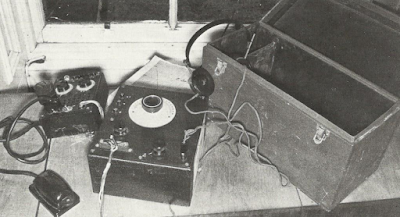
Soooo… Merrilees maybe didn’t have Walti’s set, but rather that of Drücke? But that still doesn’t explain why the set that Merrilees had was an SE 88/5 when, according to MI5 documents, Drücke had an SE 92/3!
Several pages later, on page 22 of After the Battle magazine, there is a photograph of a suitcase wireless transmitter/receiver, presumably that of Walti, although the caption does not make this clear. If we look at one of the National Archives files on Walti (KV/2 1704-2), we find exactly the same photograph. This would suggest that ATB did not actually see the suitcase transmitter/receiver, but had access to a copy of MI5’s photograph of Walti’s set. [Winston Ramsey has confirmed this, stating that he had access to police files. These likely included photos from MI5.]
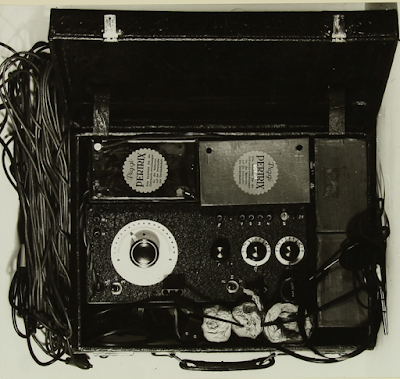
There is also a small white number painted in the upper right hand corner of the site (#21) which matches that of Walti’s set. Sooo… this then is an actual, bona-fide image of an SE 92/3 set. It’s Walti’s set, which was the same as that of Drücke and Eriksen. Except the two images here (Walti’s set) and the “Drugge” set above are clearly not identical. The one has transmitter and receiver in one housing (Walti’s set) while the other has transmitter and receiver in two housings (“Drugge’s set).
Which leaves the pictures of “Drugge’s set”, as seen in ATB volume 11, as a bit of a conundrum. If the set did not belong to Drücke and Eriksen, then who did it belong to?
The Merrilees set, after going missing for a number of years (on display at another museum) eventually found its way back to the Edinburgh museum and was put on display. Thomas received a photograph of the display from another researcher (photograph below), a good photograph with high resolution. One can zoom in and examine the items in detail and that has provided the key to unlock the puzzle.
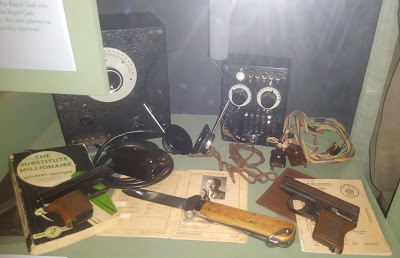
The display shows a radio transmitter and receiver in separate housings (similar to the “Drugge” set photograph from ATB magazine), as well as Walti’s passport (or a replica), a knife (which matches Walti’s) and two Mauser pistols.
When one zooms in, one can clearly see that the transmitter is labelled #46 and the receiver (less clearly) is labelled “So 24” (The So possibly stands for Sonder – special version). These numbers match the set of Wulf Schmidt, a.k.a. double agent TATE. This makes sense since the receiver and transmitter are in separate housings, typical of an SE 88/5. And, the schematics of the Merrilees set, as drawn by the Scottish radio expert, match those of an SE 88/5.
The case in which TATE carried the transmitter (see photo below) also matches the image from page 19 of ATB magazine (“Drugge’s” set).
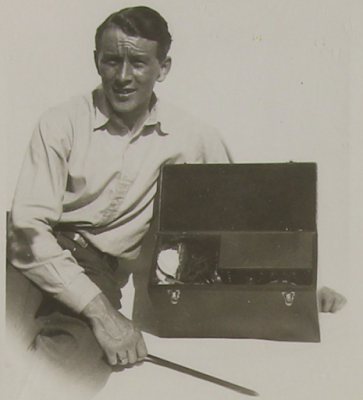
So, what can we say. Well, we know that, based on the schematics, TATE was the only spy sent with an SE 88/5. We also know that the set on display at the Edinburgh museum is that of TATE, not of Drücke or Walti.
Why MI5 would send TATE’s set to Merrilees is a mystery that will likely never be solved. On the other hand, the Edinburgh museum has quite a historical artifact on their hands!
What then became of the sets of Drücke and Walti? And the sets of the other LENA spies for that matter?
Imperial War Museum
A few years ago, I had found some post-war documents that Hinchley-Cooke sent to the Imperial War Museum to accompany some spy artifacts which are now on display at the museum. The artifacts included a suitcase transmitter/receiver and a simple transmitter in a leather camera case.
Hinchley-Cooke thought that the suitcase radio transmitter/receiver was that of either Drücke or Walti but we can’t be 100% sure of that, given how the sets were mixed up during/after the war. Even Hinchley-Cooke wasn’t sure to whom the set belonged.
What is clear is that the suitcase set at the IWM is an SE 92/3 so it could be that of Drücke or Walti, but equally that of Caroli, Ter Braak or Josef.
Hinchley-Cooke had also sent a transmitter set in a leather case (an S88) ostensibly from Waldberg and Meier. The photographs of that set on the IWM site are quite clear and sharp and one can see that the transmitter in their possession has a #8 on it which would indeed make it that of Waldberg and Meier (see photo below). Unfortunately, the museum’s display cabinet of that very same transmitter has a caption which ascribes the set to Kieboom and Pons, which is incorrect. Their set would have been labelled #9.
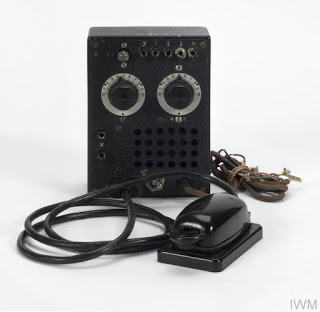
After the Battle (Volume 11) published a section on Waldberg, Meier, Kieboom and Pons. On page 15, the magazine featured a photograph of a suitcase wireless set. The caption read:
“The five-watt radio transmitter which Waldberg and Meier brought with them was given to the Imperial War Museum in London by Colonel T.A. Robertson of B.1.A., in April 1946. In favourable conditions the radio had a range of 400 miles transmitting on 4314 kcs and 5986 kcs.”
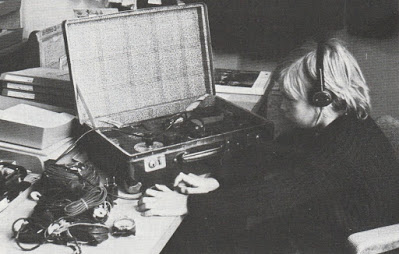
The suitcase wireless set pictured in the magazine (above photograph) is most definitely NOT that of Waldberg and Meier who were NOT sent with a suitcase set (transmitter/receiver) but a simple transmitter, an S88, in a camera case.
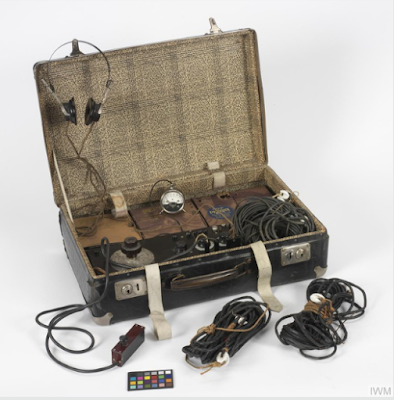
The suitcase set pictured in the magazine, however, looks identical to the suitcase set featured on the IWM site (see photograph above), and which is on display in the museum (IWM COM 1500). It is thus quite likely that ATB visited the IWM and took the photograph of their suitcase wireless transmitter/receiver.
In 2014, when I visited the Imperial War Museum, the caption accompanying the suitcase transmitter/receiver stated that it might have belonged to Waldberg and Meier. Similarly, the S88 transmitter was labelled as belonging to Kieboom and Pons. Both of those would appear to be inaccurate. The S88 (COM 1501) belonged to Waldberg and Meier. And Kieboom and Pons had an identical S88 transmitter. Sooo… whose suitcase set does the IWM actually have?
Whose set is in the possession of the IWM?
Ideally, someone would examine the IWM suitcase set more closely and find the little white number that was painted onto each of the spy sets and which were well documented by MI5. That would, in theory, identify the set with certainty:
- Caroli (#35)
- Drücke (#6)
- Walti (#21)
- Ter Braak (#24)
- Josef (#26)
Although, after examining the IWM photograph and that of Walti’s set (from his KV file), I think we can eliminate Walti’s set from the mix.

The IWM pic has different markings around the little switch marked 2 and there is clearly no #21 on the upper right hand corner.
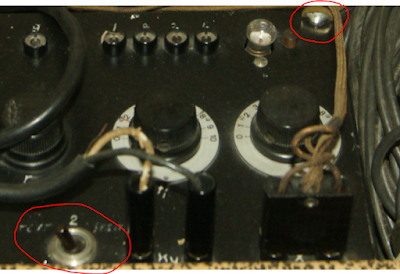
On the other hand, Thomas has pointed out that Walti was sent to England with a “fine-tuning knob” in addition to the regular tuning knob on his radio.. If one examines the IWM photograph above, one can see that it includes a fine-tuning knob (or Mentor Knopfautomat) installed on the set.
Thomas kindly sent a small video which outlined the differences between a regular knob and a fine-tuning knob. I’m not going to try and explain it here, but if one compares the IWM knob with that of Ter Braak’s set (for example), one can readily see the difference.
Below, we can see that the IWM COM 1500 knob is a double knob. With one knob, one could make gross adjustments while with the other knob, one could make smaller adjustments.
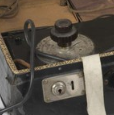
On the other hand, if we look at Ter Braak’s set, one can see that the knob is just a single knob which could be quite finicky if one was trying to make small adjustments to the tuning.
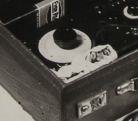
Thomas is quite perplexed by the fine-tuning knob as pictured in the IWM COM 1500 photograph as one couldn’t just remove the regular knob and replace it with the fine-tuning knob. Which leaves us with a bit of a conundrum, which we will come back to later.
If we examine some of the other sets for which we have photographs. We can see that the suitcase for Ter Braak’s set is quite different from the IWM case. Ter Braak’s suitcase was brown Morrccan leather while the IWM case is black. One can also see that the pattern on the interior of the suitcase lid is very different. Mind you, all of the components and cases from the different spy sets could have been shuffled during their tenure with MI5.
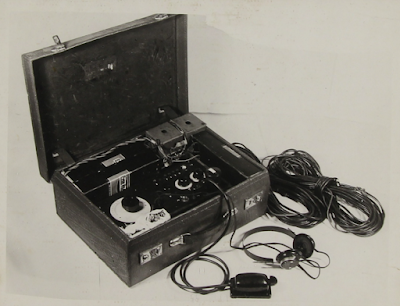
On the other hand, if we zoom in for a closer look of Ter Braak’s set, it does appear that there is a number painted in the upper right hand corner of the set, very unlike the IWM set. The label for the little switch is impossible to read (2 or II). On the other hand, one can clearly see that, on Ter Braak’s set, there are numbers written below the series of four transmitter antenna sockets (circled in yellow below). This does NOT match the IWM set on which those four numbers are written above the plug holes (see photograph above).
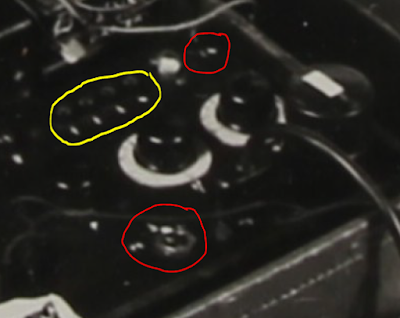
If we eliminate Ter Braak’s sets from the mix, and set aside Walti for now, then we are left with Caroli, Drücke and Josef as the three other contenders for the IWM set.
One description of the suitcase in which Josef carried his wireless set stated:
“A wireless set size 1’5″ x 7″ x 13″ in black imitation crocodile case was found. This was new with two catches chromium plated, a carrying handle which also had chromium fixtures. The case also contained papers which were evidently instructions for the manipulation of the set. It is worthy to note that the keys to the case were found in a wallet in the man’s possession. These were stamped “165”. (emphasis added)”
If we examine the IWM suitcase wireless set, we see that the catches are chromium plated but that the carrying handle has no chromium fixture. If one looks at Ter Braak’s set, one can see a suitcase with chromium fixtures on the handle. This makes it unlikely that the IWM set, at least the suitcase, is that of Josef.
Which leaves us with Caroli and Drücke as being the possible owners of the IWM set, or at least, of the suitcase. Given that Hinchley-Cooke thought that the set could be that of Drücke or Walti, it may indeed be that the IWM has Drücke’s set. Thomas has suggested that perhaps Drücke’s set also had a fine-tuning knob, but already installed on his set, and not loose as with Walti’s set. The National Archives files on Drücke do not, however, have a schematic or photograph of Drücke’s set, which is unfortunate. On the other hand, if someone could conduct a closer examination of the suitcase wireless set in the possession of the IWM, we might get some answers.
Loose Ends
There are still a few loose ends… what set did Karl Kurt Gross (GANDER/GOOSE) have on him when he landed? His set was #40 but his file, if it wasn’t destroyed, has not been released to the National Archives. Apparently he only had a transmitter with him, was it an S88?
As well, Moe (MUTT) and Glad (JEFF) had a wireless set (#38) but their files do not include any schematics or even a description of their radio. Were they equipped with an SE 92/3 as well? I have seen a couple of documents in the Nicolai Steen Marinus Hansen file which state that Hansen was in possession of an SE 99/10 (KV 2/1936 folio 80c) which was described as being virtually identical with the sets of MUTT and JEFF (KV 2/1936 folio 127a). Apparently an agent named DERRICK had a set which had burnt out and needed replacement parts. The writer requested either Hansen’s set or that of MUTT/JEFF, be sent to them so that they could repair DERRICK’s set. It is possible that the other LENA spy sets were cannibalized at some point for parts. Or perhaps they were sent with SOE agents… we shall likely never know.
Conclusion
It seems pretty clear that the Edinburgh museum has the wireless set of TATE, not that of Drücke or Walti. TATE was a double-agent who transmitted falsified intelligence to the Germans up until May 1945, the longest running double agent in MI5s stable.
The suitcase transmitter/receiver in the possession of the IWM may be that of Drücke, although further investigation is required.
It’s too bad that MI5 didn’t preserve more photographs of the spy radio sets in the agent files. There are, for example, no photographs of the sets from Josef, Caroli or Drücke. Some reports mention photographs, but they are not included in the spy files. Mind you, some reports note that a document was “placed in the wireless file”. So it is possible that there are some other files, perhaps RSS files, which have photographs of the spy sets.
For myself, I am now quite clear on what set Josef had in his possession, an SE 92/3! And if I want to look at a photograph of a similar set, I can look at the photographs of the sets in Walti or Ter Braak’s files. And… if I want to see a set in person, I can visit the IWM display in London and look at IWM COM 1500.
Addendum – 2021 01 20
There has been some question as to whether or not Ter Braak’s set is actually contained within a single housing or whether it is in two housings. Below is a photograph of Ter Braak’s set from KV 2/114. To my mind, it looks like a single housing. The upper edge of the housing is clearly a clean, continuous line even though the bottom edge is obscured on the left below the large tuning knob.
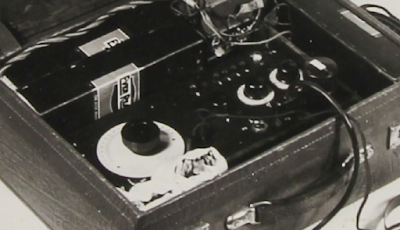
I have added a couple of red lines: the upper red line marks the straight edge of the battery pack. The lower red line is parallel to the upper line and is located along the clear upper edge of the single housing unit.
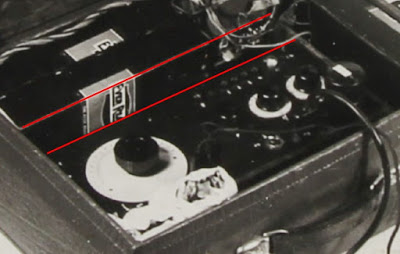
In addition, one can clearly see that the panel configuration of Ter Braak’s set is virtually identical to that of Walti’s set and very different from the S88 of Waldberg and Meier. Below, we can see a comparison of the S88 from Waldberg and Meier, the SE 92/3 from Walti and then Ter Braak’s set at the bottom. Coloured circles denote identical items on the transmitter panel of Walti and Ter Braak’s sets. In addition, it is clear that the S88 set is taller than it is wide, which differs from Walti and Ter Braak’s sets.
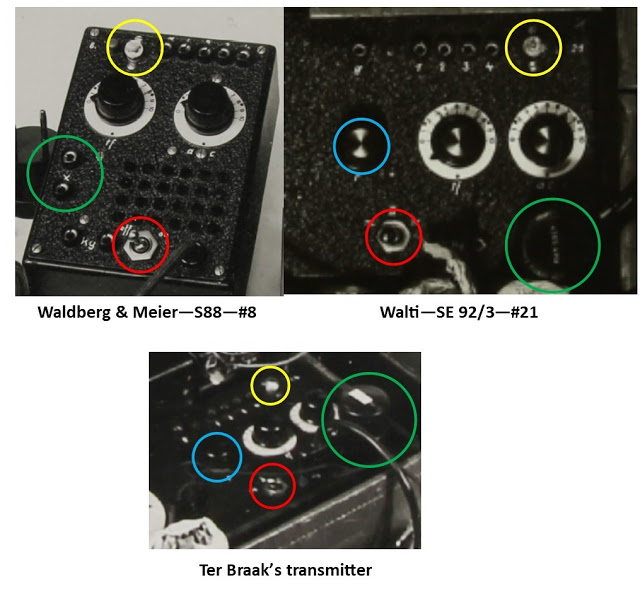
From the above, it’s quite clear that Ter Braak’s set is virtually identical with Walti’s set and very different from the S88 of Waldberg and Meier. The S88 of Waldberg and Meier is virtually identical with that of TATE (see photo of the Edinburgh display earlier in this blog post) and if we agree that TATE’s set is an SE 88/5 then Walti and Ter Braak’s sets are clearly not SE 88/5’s.
Sources
National Archives – various KV 2 files including KV 2/1700, KV 2/1704 and KV 2/114
Imperial War Museum – COM 1500 and COM 1501 photographs
Many thanks to Thomas Hoeppe for providing additional photographs and technical details which helped add clarity. Our discussion (via email) has been quite fruitful and has untangled at least a portion of the spy radios history! Thomas has written a piece on the TATE set which has being included in a Supplement to the Wireless for the Warrior series (opens as a pdf).
P.S. The Tate set is currently on display at the Scottish National War Museum in Edinburgh Castle. They have a picture of Walti’s passport and a pistol on this page, and a note that the spy display is in the Active Service Gallery. Too bad they don’t have a virtual tour of the museum!
